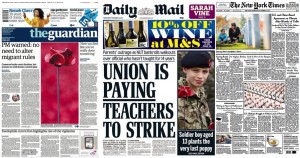How important are protected areas in our lives? In the United States, they have been an establishment for many generations, part of a tradition and history that we often take for granted. Interstates, railways, and air transportation make parks easily accessible for a large portion of the population. Parks in the U.S. are well established. Their presence is founded on generations of trailblazers and visionaries, outdoorsmen and laborers who encountered vivacity in America’s open spaces, who wore through boot soles to discover their soul elevated by the natural world around them; on park rangers, trail workers, and packers who pioneered pathways for the benefit of public access and enjoyment; and on visitors, photographers, and artists, who brought home impressive stories and images of spectacular sights to share with their friends and family. Protected areas do not only preserve nature, they preserve the continuum of all life and history, providing an opportunity for humans to foster a connection with that which enlivens their spirit and enables them to exist. It allows for that connection, once created, to be shared, fostering new human ties with nature.
Visiting a protected area today in the U.S. may expose the faint reminders of the hard work invested in its establishment via interpretative signage. In other parts of the world, however, protected areas are relatively new and have not been afforded the opportunity to have an extensive history or experience trial and error. In this increasingly complex modern world with strong outside pressures from resource extraction companies, social-political strife, and government wills, protected area managers in developing countries are having to accomplish a lot more with much less. Limited budgets, and at times, no budget at all, forces developing protected area systems to face conservation challenges with creativity, dedication, and a mentality of deep resolution to crusade for conservation in the face of diversity no matter the outcome. This very story of the new generation of protected area managers was reflected in the experiences shared by 24 Latin American and African conservation professionals that I had the pleasure to work with during this past summer. At the end of the protected area management seminar that gave them the opportunity to collectively work through common challenges, network, and share resources, this ultimate sentiment was unanimously shared: “We may have little resources to work with, but we have the drive, passion, and desire to work for the advancement of our protected areas and will continue to do so no matter the challenges we face.” In my opinion, these are our modern day trailblazers of conservation.
The World Parks Congress provides the opportunity to connect our modern day trailblazers with conservationists throughout the world. It acknowledges that problems occurring in one part of the world are not unique but a set of common challenges that we must collectively resolve together. It provides an opportunity for protected areas to enter into the forefront of the global conscious. It acknowledges our past by setting goals for a better and brighter future. It reminds us that protected areas are important for the lives of everyone, not just the species that they are protecting. Complexities, often-ominous towering walls almost seemingly insurmountable, are brought into focus. It has the potential to bring new populations into the conversation, providing the opportunity for new contributors of solutions. It provides a nexus between conservation practitioners and concerned citizens.
The IUCN’s utilization of social media hopes to advance this connection. Their use of social media to promote the World Parks Congress is forward thinking. However, the simple use of social media is not sufficient in itself to bring new populations into the conversation. So far streaming videos invite global audiences to peek into World Parks Congress dialogues. Twitter, Facebook, and Instagram feature long uncorrelated and unsorted feeds of pictures and brief headlines. An extremely hidden link transfers users to another website to access an open solutions forum. However, the World Parks Congress does not appear to provide a virtual venue to unite and connect communities, involve schools, inspire businesses, and move the everyday individual into collective action for the preservation of biodiversity. A website, in this modern day, has the power to truly incorporate citizen participation (think about any large popular culture campaigns where viewers are invited to vote or interact electronically). In addition, partnerships need to be forged across all sectors of our global society. If a conference happens once every ten years, then the preparation, partnership forming, and online interface needs to reflect the magnitude of importance that the World Parks Congress occupies for conservationists, protected area managers, indigenous people, and world citizens. It should reflect a more cohesive and organized movement that directs online viewers to clarified topics, inviting them to be virtual participants in a well defined international discussion. The World Parks Congress should be a trailblazer in the conservation movement, reflecting the dedication that all generations have invested in the effort to preserve nature, biodiversity, or simply just a beautiful view.



